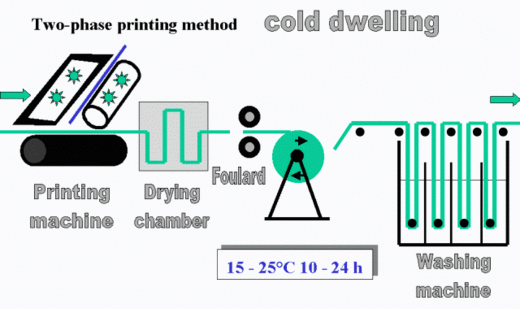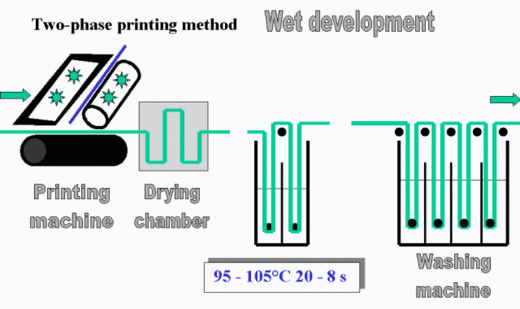dyes.synthesia.eu / Organic dyes / Textile dyes / OSTAZIN RED H-B
OSTAZIN RED H-B
|
Print on mercerized cotton fabric |
||
|
30 g/kg |
||
| Characteristic | |
| C. I. | Reactive Red 24:1 |
| C. I. No. | 18208:1 |
| CAS No. | 72829-25-5 |
| Chemical Class |
Reactive azodye |
| Suitability for application | cotton | viscose |
| Steaming | suitable | suitable |
| HT-steaming | suitable | suitable |
| Dry heat baking | suitable | suitable |
| Flash ageing | less suitable | less suitable |
| Wet development | less suitable | suitable |
| Cold pad-batch | unsuitable | unsuitable |
| Washability | 2 |
| Suitability for other materials | |
| Polyamide | suitable |
| Natural silk | suitable |
| Wool | suitable |
| Suitability for additional finish | ||
| Neutral discharge | 5 g/l 3-4 | 45 g/l 2 |
| Alkaline discharge | 5 g/l 3-4 | 45 g/l 2 |
| Caustic crape | 4 | |
| PVC coating | suitable | |
| Rubberizing | suitable | |
| Fastness | cotton | viscose | ||||
| standard depth | 1/25 | 1/6 | 1/1 | 1/25 | 1/6 | 1/1 |
| Light Xenotest | 3 | 4 | 5 | 3 | 4 | 5 |
| Light Xenotest - Wet | 2 | |||||
| standard depth | 1/1 | 1/1 | ||||
| Water | 4 | 4 | 4-5 | 4-5 | 4-5 | 4-5 |
| Chlorinated watter | 4 | 4 | ||||
| Washing 95°C | 4 | 4-5 | 5 | 4 | 4-5 | 4-5 |
| Domestic laundering 95°C + perborate | 4 | 4-5 | 4-5 | 4 | 4-5 | 4-5 |
| Perspiration acid | 4-5 | 4 | 4-5 | 4-5 | 4-5 | 4-5 |
| Perspiration alkaline | 4-5 | 4 | 4-5 | 4-5 | 4-5 | 4-5 |
| Rubbing dry | 4-5 | 5 | ||||
| Rubbing wet | 4 | 4-5 | ||||
| Hot pressing dry immediately | 3 | 3-4 | ||||
| Hot pressing dry after 4 h | 4 | 4-5 | ||||
| Application possibilities |
One-phase printing method 
|
|
|
Two-phase printing method - Short time steaming 
|
|
|
Two-phase printing method - Cold dwelling 
|
|
|
Two-phase printing method - Wet development 
|
|
|
 suitable suitable  partially suitable partially suitable  unsuitable unsuitable
|
| Testing methods | ||||||||||||||||||||||||||||||||||||||||||||||||||||||||||||||||||
|
Fastness standards
Washability The degree specifies the unfixed dye portion washability from the printed cellulose material
1 - very good
Dischargeability Neutral or alkaline discharges are printed on predyed material. The dyed material is steamed at 102°C for 10 minutes and then washed in cold and hot water. The dischargeability is evaluated according to scale
1 - undischargeable
Caustic crape A perfectly washed and dried, dyed or printed material is craped by printing with sodium hydroxide solution 40-45%. After dwelling for 15 minutes the material is washed in cold water then in the bath containing 5-7 ml/l acetic acid 30% and again rinsed in cold water. The change of shade is evaluated according to the grey scale.
Rubberizing The suitability for additional rubberizing is determined on the rubber poison content basis. |
||||||||||||||||||||||||||||||||||||||||||||||||||||||||||||||||||
PF 2026
Synthesia will be presented at the European Coatings Show 2025
PF 2025




